Raising a rainbow of scientists
I studied biochemistry as an undergraduate at the University of Missouri. As a freshman, I was immediately interested in the chemical processes that make biology go. However, as one of the only black students among more than 200 biochemistry undergrads, I found the culture within this major to be isolating. The concepts and applications presented never seemed to touch my person or my experience, and I failed to understand how a discipline that I found so profound and intriguing also felt distant and detaching. I perceived an excitement and sense of fulfillment among my white biochemistry peers that was paralleled in black peers only if they were enrolled in majors like social work, psychology or sometimes business.
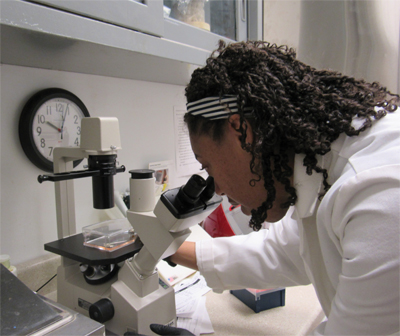 Ashley Warfield-Oyirifi does lab work at the University of Illinois, Urbana–Champaign, where she is studying how dietary compounds influence the expression, activation and signaling of molecules that regulate cancer metastasis.courtesy of ashley warfield-oyirifi
Ashley Warfield-Oyirifi does lab work at the University of Illinois, Urbana–Champaign, where she is studying how dietary compounds influence the expression, activation and signaling of molecules that regulate cancer metastasis.courtesy of ashley warfield-oyirifi
Of course, I cannot assert that none of my white biochemistry peers longed for more meaning from their coursework or that all the biochemistry students of color sensed a gap between our academic and real lives. However, I can mention anecdotally that most black students feel responsibility and satisfaction in connecting their higher education to their loved ones or communities. Some of our relatives discuss academic topics, but many of us have living grandparents who, despite academic prowess, could not lawfully or reasonably attend the institutions we graduated from. Black and other underrepresented biochemistry students of color often want to take our university learning home to such talented yet disenfranchised relatives in a meaningful way. To do so, biochemistry must matter not just in a cell, organism or clinic but also at a dinner table and in life.
Although an understanding of how my biochemistry studies mattered around the dinner table eluded me, the work remained intriguing, and I completed my undergraduate studies in biochemistry. Like many in my cohort, I easily secured employment after graduation, working in analytical chemistry. The work was well paid and interesting, and this career seemed like a mark of success. However, I soon found myself pondering whether my career had any meaning. It had to matter beyond investigating molecular structures of compounds and active sites of proteins and helping my company generate revenue. Of what societal utility was the work I was doing? “Maybe, I’ll find the answer in graduate school,” I thought.
I didn’t know it then, but I was not alone. Jeremy, another MU biochemistry graduate, recently said, after working five years in oil and polymer science industries, “I look around and think ‘Does anybody care about this (work) beyond the economic value?’ … When I see things around me, I try to consider it at the molecular level. I don’t think other people are doing that. We are just making money.” He paused to think. “Will graduate school make this mean more? Will I be able to do more meaningful stuff?”
An answer in anthropology
I could not answer Jeremy’s question. Graduate school helped me find more meaning in biochemistry, but indirectly. I found the answer in an elective course taught by an anthropologist where we faced the question, “Is race a biological reality or a socially constructed phenomenon?” My classmates were students of many disciplines, from archeology to education. I was the resident life-scientist. As such, I was impelled to contribute a biochemical rationale to the class inquiry. In my reflection, I shared: “If we want to utilize an approach where we compare biopolymers and small molecules to elucidate differences between human populations, then a robust method would be to compare the full set of molecules that mediate DNA expression and are mediated by DNA expression. This means conducting a comparative analysis of not only the genome, as has been done in previous attempts to study differences among races. We must comprehensively profile the transcriptome, proteome, and metabolome. Of the 99.9 percent similarity among genomes of varying races, how much similarity and difference exists in genome expression and why?”
My thinking was drawn from a previous semester’s graduate biochemistry course in which I studied and presented research findings on initiation complex assembly. The research suggested that euchromatic regions of DNA were coding regions, based on the researchers’ observation of initiation complex assembly throughout those regions. I noted one major limitation: The researchers did not demonstrate gene expression. Why stop at the assembly of the complex? Similarly, for comparative analysis of genomes to determine racial difference, it seemed necessary to look beyond the code toward global expression patterns and their environmental influences. After I shared this input in class, my classmates and professor in the course made valuable contributions through the lenses of their disciplines, completing the discussion. Seemingly, they would not have considered suggesting a more comprehensive strategy for investigating racial difference. Similarly, I could not have begun to unpack, as my peers did, the implications that lie within concluding that biological differences existed or failed to exist among races.
For the first time, primary literature in biochemistry mattered to me beyond the methods and molecular findings. Beyond the potential for clinical applications. The literature spoke to my lived experience, my existence. My identity and all our identities as humans. It was interesting. It was challenging. It was engaging to consider the societal implications of molecules. But it was not long before the celebration of how biochemistry and molecular biology could be used to chime in on questions about culture and society turned to lamentation. “Why have I not been prompted or challenged to understand lived experiences through biochemistry before?” I wondered.
Redefining diversity
Why do U.S. approaches to education imbue us with artificial notions of a dichotomy between laboratory science and lived experiences? I began spending late nights and long days pondering this question. This false dichotomy is perplexing, because the array of biomedical, psychosocial and sociopolitical dimensions that mediate (or are mediated by) life and physical sciences is immense and can serve as rich educational material. I call it pedagogical capital. This capital often remains untapped in conventional university-level instruction of the hard sciences. As a result, many students with capacities and goals to be adept scientists accede to an illusion of choice between studies and careers that are socially engaging and those that are scientifically rigorous. As pbs.org reported in the February 2016 story “African-Americans overrepresented among low-paying college majors,” the common practice of teaching science, technology, engineering and mathematics, or STEM, subjects without regard for social implications ultimately snowballs to the displacement of students of color from sciences and often into lower paid service-oriented careers.
How do we undo this? A true and systematic commitment to diversity in biochemistry and molecular biology means recognizing the inseparable relationship between molecular interactions and lived experiences. To accomplish meaningful diversity in biochemistry, we will need to redefine diversity and understand it as a variation in the types and applications of content offered to students rather than varying shades of students in lecture halls. We must extend the reach of course content beyond applications of the scientific moment, such as the current preoccupation with precision medicine, rather than relying on admissions offices’ special-interest recruitment strategies. It is up to university educators to train diverse students to contemplate diverse (yet robust and sustainable) solutions to a diverse and limitless set of biochemistry and molecular biology questions.
Steps to take
Here are four steps to attract, serve and retain heterogeneous populations of students through your instruction.
1. Become a learner. Seek out scholarly reading on societal implications of molecules.
Literature from the history and philosophy of science and medicine is a stimulating place to start looking for methodically gathered and recorded information about scientific knowledge production. You can gain great insight for courses by understanding the intellectual and social history that led to the modes of scientific investigation we practice. You’ll find suggested reading at the end of this essay.
Strategies: When reading, do not make scientist status or scientism a condition for deep engagement. Zoom out and think about how to integrate information into a problem set or favorite course lecture rather than looking for sophisticated explanations or appreciation for technical details.
2. Recenter instruction to include inquiry and application alongside concepts and theories.
A groundbreaking text for my thinking was political anthropologist Faye Harrison’s “Outsider Within: Reworking Anthropology in the Global Age.” This book and its approaches serve as a model for reconstructing disciplines to extend the reach of inquiries, methods and findings. In chapter 2, “Unburying theory, repositioning practice,” Harrison examines how her discipline celebrates theoretical knowledge at the expense of acknowledging how practice can inform theory, create knowledge and advance the discipline.
A similar unbalanced commitment to concepts and theories exists in biochemistry education and calls us to reposition praxis as a central value. To introduce variation in biochemistry content, we must stop using lectures solely to present biochemical equations, concepts and theories. This approach tends to be misaligned with best practices suggested by scholars of instructional design and educational psychology, which evidences contextual, connected, active learning as highly effective. A 2014 article in the Proceedings of the National Academy of Sciences, “Active learning increases student performance in science, engineering, and mathematics,” calls for the use of active learning to increase STEM undergraduate degree completion. Interrogating social applications of biochemistry provides invaluable content for the type of synthesis, analysis and evaluation that defines active learning. In a 2014 article in the International Journal of Science Education, Derek Hodson points out the risk of conflating learning science with learning to address socio-scientific issues. This distinction helps to emphasize that we want to integrate social inquiries of molecules into current material rather than make substitutions.
Strategies: Revamp a syllabus to include one social situation for every 3 to 5 lecture topics. Ask yourself, “Can a student extrapolate why this rigorous course might be important to a grandparent, general citizen or legislator?” Read about adult-learning theories and audit a course in science education to retrain yourself as a multimodal, thought-provoking educator.
3. Share what you’ve learned. Regularly discuss how molecular events have societal implications.
Scientific spaces at universities can serve as a vacuum, separating academic content from lived realities. Classroom practices must eliminate this dialysis effect that filters students from their societal status each time they enter a biochemistry class. Commit space in a syllabus for students to choose how they apply and explore class content. Some may choose medical applications and others socioeconomic issues. Be an advocate and model for accurately exploring the biochemistry of anything. Be careful. This advocacy may force you to rethink your own research questions and the interests they serve.
Strategies: Assign students to evaluate the biochemistry of current events. Or, in the interest of time and scale, prepare a five-minute weekly segment discussing information you’ve read from step 1 (above) and how it intersects with molecular concepts.
4. Be patient and careful and anticipate the benefits
Recentering thinking and teaching easily could become a life’s work. It is a slow and imperfect journey. Patience is key to the cycles of adjusting course strategies, responding to feedback, and adapting to social moments and cohorts of students. This kind of teaching requires extra time and lacks documentability (for tenure promotion), but immense rewards come at no expense to student learning or course rigor. Look for the following benefits and adjust until you notice them.
Rewards: Students develop as thinkers and problem-solvers rather than learners who know discrete biochemical concepts with no guaranteed ability to apply them. Professors develop their instructional practices, develop a relevant and responsible pedagogy, and challenge many types of learners. There is great potential for a lifelong sense of professional fulfillment from coupling biochemistry instruction with civic engagement to increase learners’ critical abilities. Further satisfaction is likely from seeing the outcomes of these new thinkers’ work and the impact of recruiting and retaining students with varying backgrounds, interests and goals.
Share your story
Have you worked to diversify classroom content and find social meaning in basic science? If so, we want to share your story. Please send us examples of ways that you situate biochemistry and molecular biology in a social context. Send an email toASBMB Today.
Let’s reimagine a biochemistry that attracts and retains the best students of all backgrounds, without a systematic exclusion of those interested in panning beyond the protein.
My approach
Although I have not personally reconciled the disjunction between biochemistry and life science instruction, I have found satisfaction in situated science (adapted from Donna Haraway’s term “situated knowledges”) — investigations of molecular events coupled with the experiences and culture where these events occur or are promoted. I am completing my Ph.D. studies in an applied field, nutrition, where I am studying how dietary compounds influence the expression, activation and signaling of molecules that regulate cancer metastasis. From my findings, I am prepared to coordinate a community-based curriculum that will determine if awareness of the biochemistry behind eating can influence chemoprotective dietary habits in cancer survivors. Together, these studies can speak to health disparity in cancer mortality by highlighting options other than sometimes inaccessible clinic-based preventative care. I appreciate the combined social relevance and scientific rigor of this nutrition-based project.
However, I envision a day when students of biochemistry are not driven to declare an alternative course of study to connect their biochemical investigation to its societal value. I believe that with a commitment to diversifying content rather than only students, that day will come.
Reading list
Thomas Kuhn, “The Structure of Scientific Revolutions,” University of Chicago Press (1962).
“Kuhn challenged the then prevailing view of progress in ‘normal science’. Normal scientific progress was viewed as ‘development-by-accumulation’ of accepted facts and theories. Kuhn argued for an episodic model in which periods of such conceptual continuity in normal science were interrupted by periods of revolutionary science. The discovery of ‘anomalies’ during revolutions in science leads to new paradigms.”
—The Structure of Scientific Revolutions
P. Freire, “Pedagogy of the Oppressed,” Herder and Herder Press (1970).
“Freire outlines a theory of oppression and the source of liberation. In Freire’s view, the key to liberation is the awakening of critical awareness and the thinking process in the individual.”
— Pedagogy of the Oppressed
Alondra Nelson, “The Social Life of DNA: Race, Reparations, and Reconciliation after the Genome,” Beacon Press (2016).
“We know DNA is a master key that unlocks medical and forensic secrets, but its genealogical life is both revelatory and endlessly fascinating … Nelson incisively shows that DNA is a portal to the past that yields insight for the present and future, shining a light on social traumas and historical injustices that still resonate today.”
— The Social Life of DNA
Anthony Ryan Hatch, “Blood Sugar: Racial Pharmacology and Food Justice in Black America,” University of Minnesota Press (2016).
"How contemporary biomedicine has shaped race and racism as America’s health disparities increase … Hatch argues that the advent of metabolic syndrome … (repackages) race within biomedical and genomic research."
— Blood Sugar
Author’s note:
Kuhn and Freire are universal texts. The other two suggestions are geared toward interests at the intersections of medicine, race, food and science. However, whatever your research interests, there are texts explaining how your discipline may play out in society or how it evolved into its current form. These texts can inform and inspire teaching strategies, course material and students’ thinking.
Enjoy reading ASBMB Today?
Become a member to receive the print edition four times a year and the digital edition weekly.
Learn moreGet the latest from ASBMB Today
Enter your email address, and we’ll send you a weekly email with recent articles, interviews and more.
Latest in Opinions
Opinions highlights or most popular articles
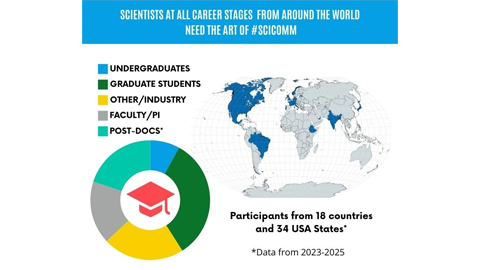
The Art of Science Communication as an infographic
Sometimes a picture is worth a lot of words.
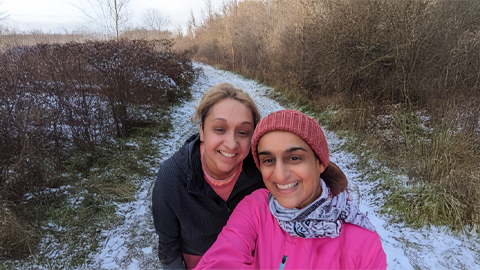
Guiding my sister through cancer
A scientist learns that sometimes communicating all the data and research needs to take a backseat.
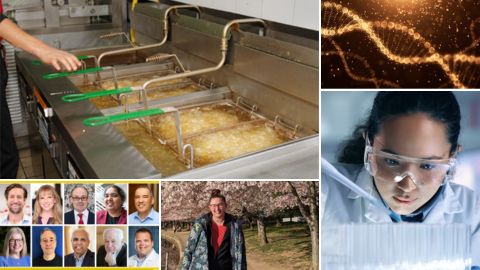
Our top 10 articles of 2024
ASBMB Today posted more than 400 original articles this year. The ones that were most read covered research, society news, policy, mental health, careers and more.
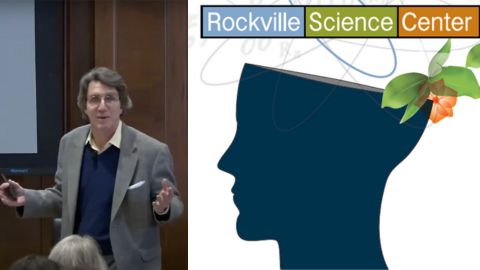
From curiosity to conversation: My first science café
“Why was I so nervous? I’d spoken in hundreds of seminars and classes, in front of large audiences.” But this was the first time Ed Eisenstein was explaining his research “to a crowd of nonscientists relaxing over food and drink at a local tavern.”

‘One word or less’
For a long time, Howard Steinman thought this phrase was a joke: “Less than one word is no words, and you can't answer a question without words.”

Can we make grad school more welcoming for all?
The students and faculty at most of the institutions training the next generation of STEM professionals do not reflect the country’s diversifying demographics, leaving a gap in experience and cultural understanding.

